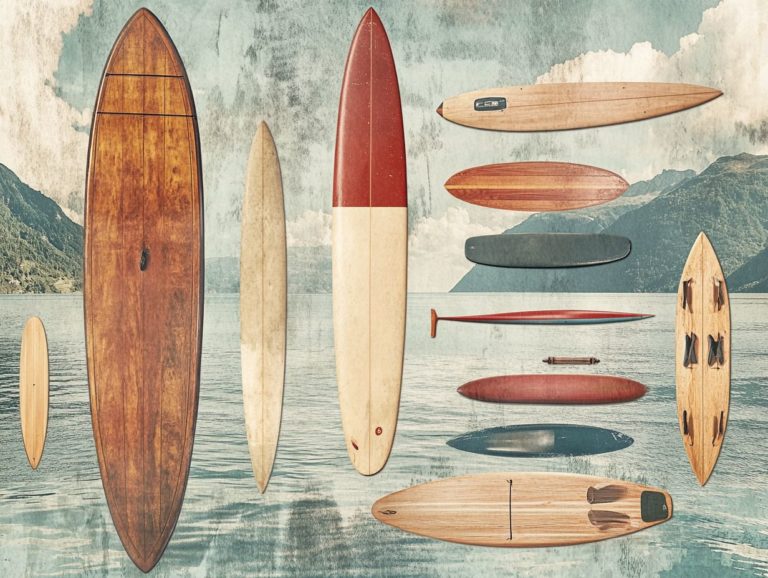The Science Behind Water Sports Equipment Design
In the realm of water sports, equipment design is crucial for enhancing performance and safety. From surfboards to wetsuits, every component is crafted to meet the unique demands of various sports and conditions.
This article explores essential elements of water sports equipment design, including materials, ergonomics, and innovative technologies like computational fluid dynamics (CFD), which uses computer simulations to study how fluids behave, and additive manufacturing. It also looks at how manufacturers balance functionality and aesthetics, creating gear that excels in performance while appealing to enthusiasts of all skill levels.
Dive in to discover how meticulous design can enhance your water adventures and transform your experience on the waves.
Contents
- Key Takeaways:
- The Importance of Design in Water Sports Equipment
- Key Elements of Water Sports Equipment Design
- Factors Influencing Design Choices
- Innovations in Water Sports Equipment Design
- Design Considerations for Water Sports Equipment Manufacturers
- Frequently Asked Questions
- What is the science behind water sports equipment design?
- How do engineers use physics in designing water sports equipment?
- What role does materials science play in water sports equipment design?
- How does biomechanics influence the design of water sports equipment?
- What are some design considerations for water sports equipment?
- How does the science behind water sports equipment design contribute to the evolution of the sport?
Key Takeaways:
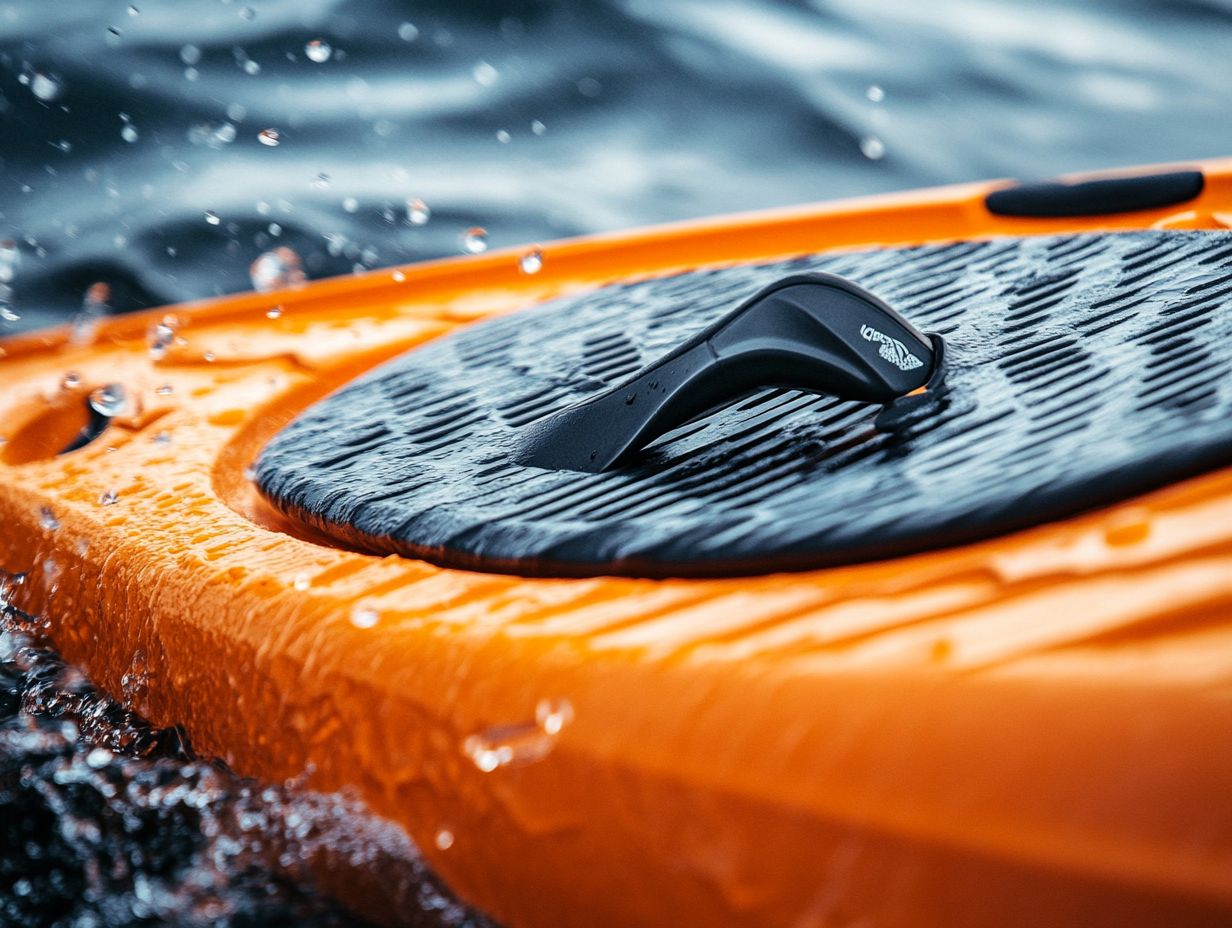
- Good design impacts your performance and safety in water sports equipment, as well as user comfort and satisfaction.
- Key elements to consider include materials, construction, ergonomics, and comfort.
- Factors like the type of sport, environmental conditions, target audience, and skill level influence design choices made by manufacturers.
The Importance of Design in Water Sports Equipment
Design is crucial in water sports equipment. It enhances performance, ensures safety, and addresses the unique challenges posed by fluid behavior in aquatic environments.
Whether considering surfboards or bobsleds, effective design minimizes drag and optimizes shape, leading to notable improvements in speed efficiency. Innovations in performance design are essential for athletes.
By leveraging the power of CFD and flow simulations, manufacturers create high-performance gear tailored to competitive athletes’ needs, raising the bar in water sports through cutting-edge design and advanced materials.
Impact on Performance and Safety
The impact of design on performance and safety in water sports equipment is remarkable. Streamlined shapes and aerodynamic features drastically reduce drag, enhancing speed while ensuring safety.
Take surfboards, for example. Their pointed noses and curvaceous fins are engineered to slice through water effortlessly. This design reflects innovations that improve performance metrics, offering a smooth ride over waves while significantly lowering the risk of wiping out.
In competitive kayaking, boats are designed with narrow hulls and tapered ends, allowing them to glide with minimal resistance. This demonstrates the importance of buoyancy principles in design, boosting speed and enhancing stability, thus reducing the risk of capsizing and improving energy efficiency.
By prioritizing such innovations, manufacturers show how thoughtful design can blend performance with safety standards, allowing you to enjoy water sports with confidence.
Key Elements of Water Sports Equipment Design
In water sports equipment design, key elements include environmental impact and advanced materials. Manufacturers carefully select construction techniques that enhance performance while prioritizing user comfort.
The goal is to empower athletes to excel while minimizing environmental impact through initiatives like sustainable surfboards and reducing marine waste. Innovations such as sustainable surfboards and advanced materials, along with 3D printing, exemplify a commitment to sustainability without compromising quality or performance.
Materials and Construction
The choice of materials and construction methods in water sports equipment is crucial. High-tech materials like polymer composites and additive manufacturing can enhance your performance while ensuring durability and environmental sustainability.
Using lightweight metals such as aluminum and advanced plastics allows for better maneuverability and agility on the water. Whether you re a recreational enthusiast or a competitive athlete, high-performance equipment can make a significant difference. For instance, fiberglass and carbon fiber contribute to lighter designs and enhance the stiffness of boards and kayaks, leading to improved speed and stability. This demonstrates the principles of water dynamics.
Sustainable practices are gaining momentum, with manufacturers increasingly opting for recycled content and eco-friendly production techniques. This focus on reducing marine waste helps lower the ecological footprint of your water sports gear. By adopting innovative strategies, brands can ensure product longevity while maintaining a responsible relationship with aquatic environments.
Ergonomics and Comfort
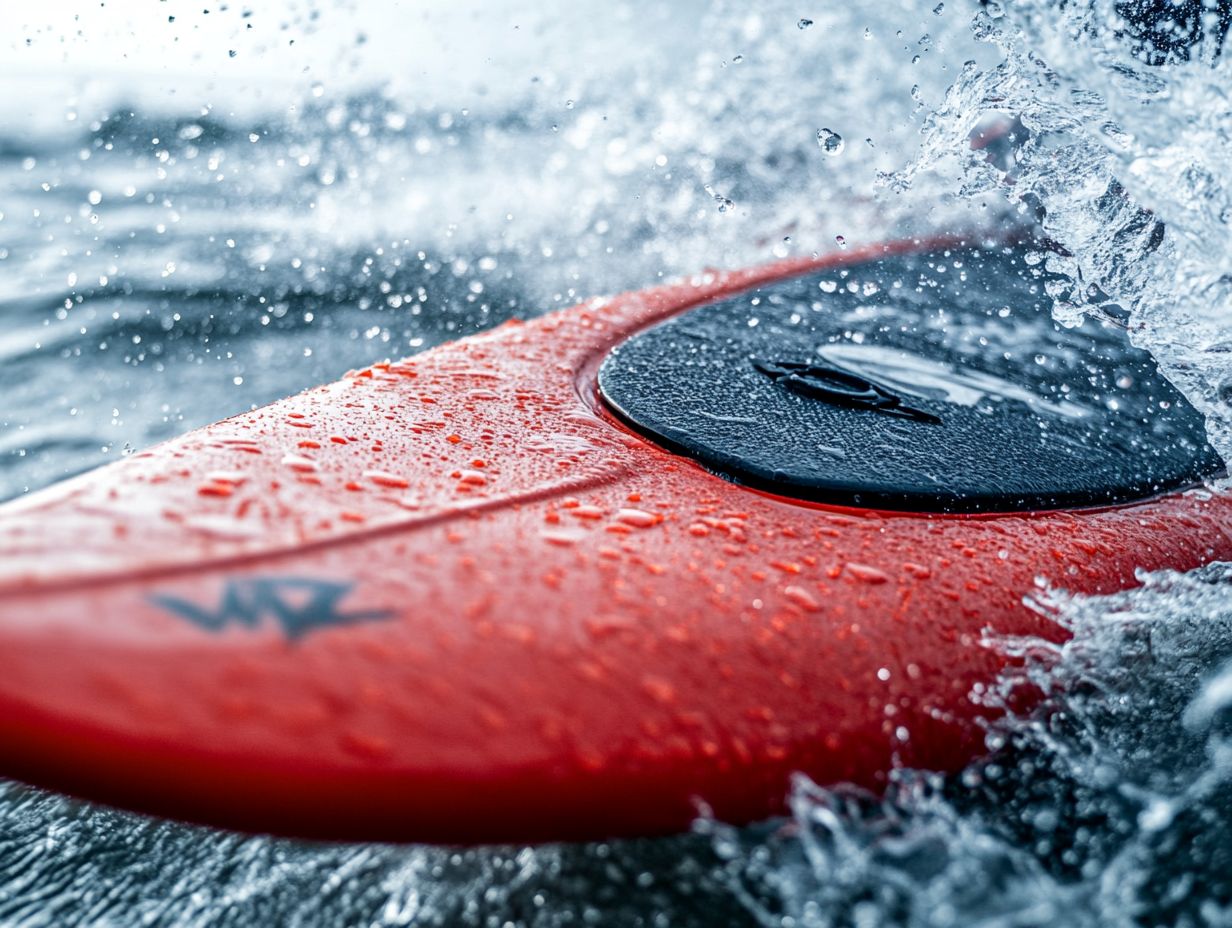
Incorporating ergonomics into water sports equipment design is essential for your comfort and overall performance experience during competitions. This approach focuses on how you interact with your gear, ensuring every detail from grip to posture is thoughtfully designed to minimize discomfort and maximize efficiency.
Features like adjustable footrests in kayaks and contoured life jackets cater to individual preferences. They allow for a personalized fit that accommodates various body shapes and sizes, enhancing overall user satisfaction.
By supporting proper posture and reducing stress on your joints, ergonomically designed equipment can help prevent fatigue. This is vital for maintaining peak performance during extended activities, especially in competitive sports. Comfort is not just an afterthought; it s essential for gaining your competitive edge.
Factors Influencing Design Choices
Your design choices in water sports equipment are shaped by various factors, including the specific type of sport, such as sailing and cycling, environmental conditions, and the skill level of your target audience.
Each of these elements plays a vital role in enhancing performance and ensuring user satisfaction, ultimately engaging both beginners and advanced athletes.
Sport Type and Conditions
The type of sport and the unique conditions in which it takes place significantly influence your design choices for water sports equipment. This applies to surfing techniques as well as sailing efficiency. Each discipline presents specific demands that directly impact performance and safety.
For example, the shape and material of your board are crafted to handle varying wave heights and water temperatures. This ensures you achieve a balance of stability and maneuverability. Conversely, sailing focuses on sail design and hull shape to maximize wind capture and buoyancy, often dictated by local water conditions and currents.
Both sports illustrate how environmental factors dictate functionality. As a surfer, you need flexibility for quick turns, while as a sailor, you prioritize structural integrity to withstand rough seas. Understanding the specifics of each sport and their environmental contexts is essential when designing equipment.
Target Audience and Skill Level
Understanding your target audience and their skill level is crucial when it comes to designing water sports equipment. This influences the development of custom boards tailored for specific needs.
By recognizing the varying abilities and preferences of users, you empower manufacturers to create gear that caters specifically to both beginners and advanced athletes.
Companies are then able to implement design features that enhance performance and safety, especially through technological advancements in sports equipment. For example, beginners often benefit from designs that are stable and forgiving, allowing them to build confidence and skill over time.
Meanwhile, advanced athletes seek high-performance equipment that includes specialized features to boost agility and speed. This tailored approach not only increases user satisfaction but also fosters engagement and skill development across all levels of ability.
Ultimately, a user-centric design underscores the importance of adaptability. This ensures that everyone, from novices to experts, can truly enjoy their time on the water.
Innovations in Water Sports Equipment Design
Innovations in water sports equipment design have transformed the industry, integrating concepts from engineering design and focusing on technological advancements. You’ll notice that new technologies are dedicated to enhancing performance and optimizing how water moves around objects.
These exciting advancements change the game for athletes, allowing them to excel in their pursuits on the water while maximizing energy efficiency.
New Technologies and Trends
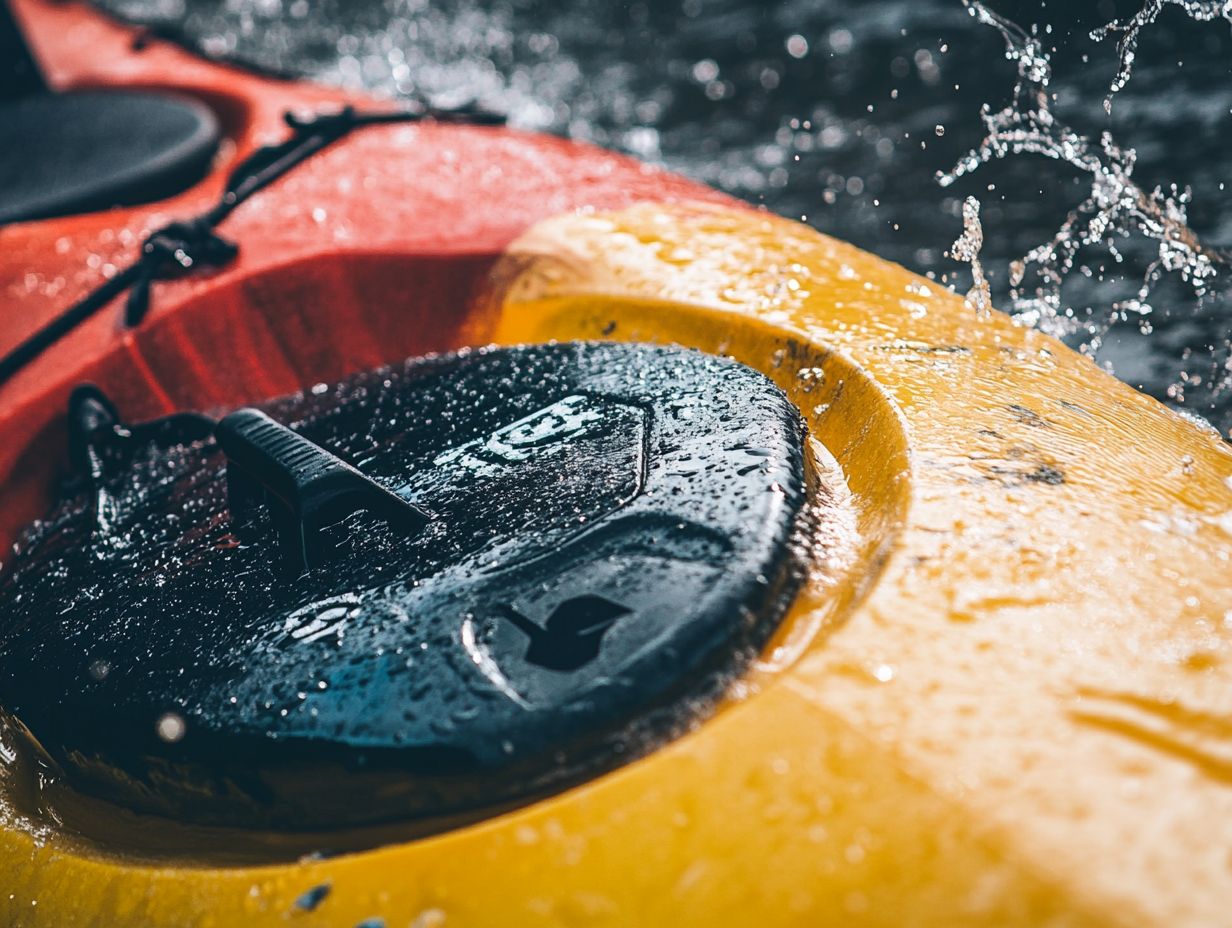
The latest technologies and trends in water sports equipment design, such as computational fluid dynamics (CFD) which helps us understand how water flows around objects and additive manufacturing, are pivotal in optimizing performance metrics.
These innovations expand the horizons of the industry, including examining dimple patterns found in golf balls for better hydrodynamics.
CFD enables you to simulate how water interacts with various shapes, allowing for precise adjustments that enhance speed and maneuverability. Meanwhile, the emergence of additive manufacturing has transformed production processes, facilitating intricate designs that were previously unattainable with traditional methods. This leads to gear that is not only lighter but also more durable.
These innovations make your time on the water even more enjoyable and compel manufacturers to prioritize sustainable materials. As a result, the industry is increasingly embracing eco-friendly practices, reflecting a growing commitment to environmental responsibility that resonates with the conscious consumer.
Design Considerations for Water Sports Equipment Manufacturers
In designing water sports equipment, you must strike a delicate balance between functionality, aerodynamics, and aesthetics. Your goal is to create products that excel in performance and capture the eye of consumers.
This visual appeal plays a crucial role in achieving market success.
Balancing Functionality and Aesthetics
Balancing functionality and aesthetics in the design of water sports equipment may seem daunting. However, it s crucial for creating products that meet athletes’ needs while captivating the eye, whether in bicycle frames or surfboards.
The relationship between visual allure and practical usability is essential. As an athlete, you desire gear that performs exceptionally while reflecting your unique style. For example, surfboards with striking graphics and sleek designs are far more likely to grab attention, translating into higher sales and steadfast brand loyalty.
When manufacturers prioritize both functionality and aesthetics, they boost the marketability of their products and elevate overall performance. This enhances your experience on the water. By genuinely understanding the preferences of water sports enthusiasts, companies can innovate equipment that delivers both top-tier performance and aesthetic appeal, giving you a distinct advantage in a competitive marketplace.
Frequently Asked Questions
Here s a look at some common questions about the science behind water sports equipment design.
What is the science behind water sports equipment design?
The science behind water sports equipment design involves various fields such as physics, engineering, materials science, and biomechanics. It focuses on creating equipment that maximizes performance, efficiency, and safety for athletes.
How do engineers use physics in designing water sports equipment?
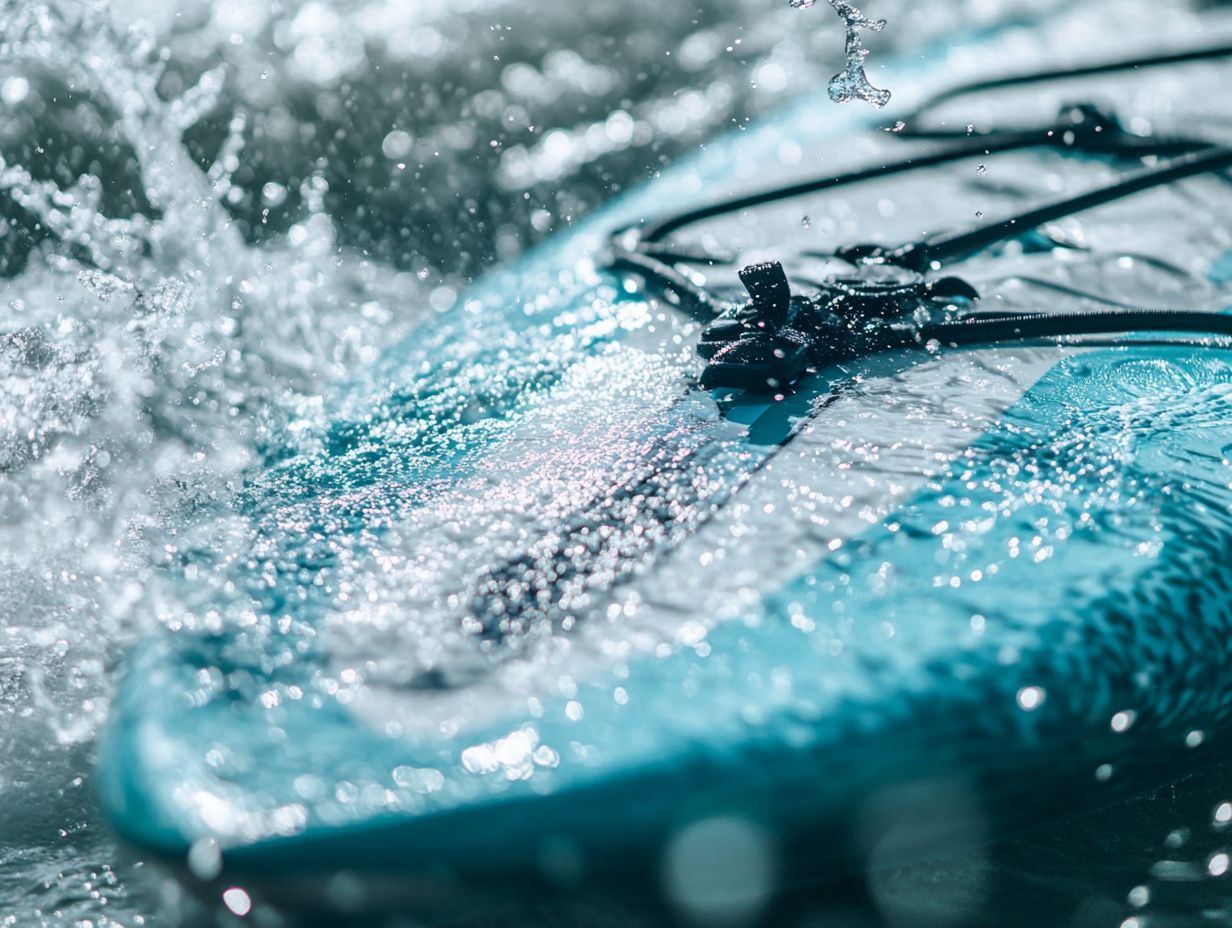
Engineers use physics principles such as buoyancy, which is the ability of an object to float in water, drag, and fluid dynamics to understand how water affects equipment and athlete movement. This knowledge helps them design gear that minimizes drag while maximizing speed and control.
What role does materials science play in water sports equipment design?
Materials science is crucial for creating durable and high-performance equipment for water sports. Engineers utilize advanced materials like composites and polymers to make gear that is lightweight, strong, and resistant to corrosion.
How does biomechanics influence the design of water sports equipment?
Biomechanics is the study of how the human body moves and interacts with its surroundings. In water sports, engineers apply this knowledge to design equipment that complements athletes’ natural movements, improving performance and reducing injury risks.
What are some design considerations for water sports equipment?
Key design considerations for water sports equipment include hydrodynamics, ergonomics, and safety. Engineers must find a balance between these factors to create efficient, comfortable, and safe gear for athletes.
How does the science behind water sports equipment design contribute to the evolution of the sport?
Advancements in water sports equipment design significantly influence the sport’s evolution. As gear becomes more advanced and efficient, athletes can push the boundaries of what was once thought possible, leading to new techniques and records.


